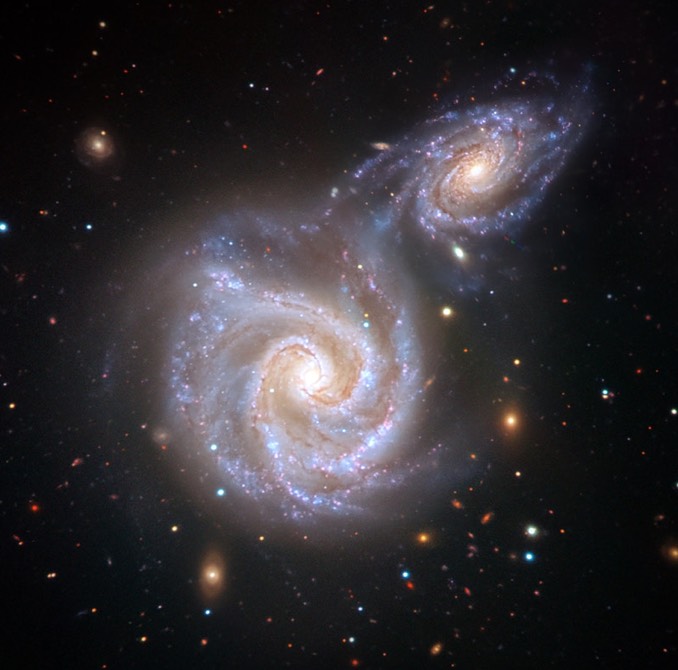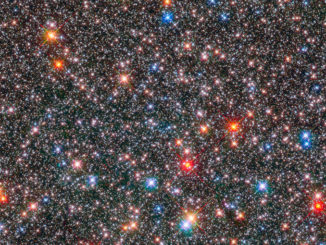
Using data from the European Space Agency’s Gaia spacecraft, astronomers have unearthed evidence indicating an ancient head-on collision between the young Milky Way and a smaller body dubbed the “Sausage” galaxy, a cataclysmic crack up that helped define the structure of Earth’s home in space, shaping the galaxy’s inner bulge, its outer halo and adding at least eight massive globular clusters.
The smaller dwarf galaxy did not survive the encounter, quickly falling apart as its stars merged with, and helped reshape, the Milky Way.
Vasily Belokurov of the University of Cambridge and the Center for Computational Astrophysics at the Flatiron Institute in New York City said the collision “ripped the dwarf to shreds, leaving its stars moving in very radial orbits” taking them “very close to the center of our galaxy. This is a telltale sign that the dwarf galaxy came in on a really eccentric orbit and its fate was sealed.”
The collision is described in papers published in the Monthly Notices of the Royal Astronomical Society, The Astrophysical Journal Letters and arXiv.org. Studying Gaia data, which shows the positions and trajectories of a large number of stars with unprecedented accuracy, Wyn Evans of Cambridge said “the sausage shape just jumped out at us.”
“As the smaller galaxy broke up, its stars were thrown onto very radial orbits,” he said. “These Sausage stars are what’s left of the last major merger of the Milky Way.”
Collisions with smaller galaxies continued in the aftermath, but the Sausage was much more massive – 10 billion times the mass of the Sun when its gas, dust, stars and dark matter are included. When it crashed into the Milky Way, the larger galaxy’s disk likely was puffed up or possibly fractured with debris from the impactor scattered around the inner regions, reshaping the galactic bulge and stellar halo seen today.
Computer simulations reproduce the features described by the researchers, showing stars from the Sausage entering stretched-out orbits similar to those observed in the Gaia data. The simulations show those orbits growing more elongated in the growing disk of the Milky Way, which swells and thickens after the collision.
“While there have been many dwarf satellites falling onto the Milky Way over its life, this was the largest of them all,” said Sergey Koposov of Carnegie Mellon University.



